Ruin Lust, Tate Britain | reviews, news & interviews
Ruin Lust, Tate Britain
Ruin Lust, Tate Britain
Poignant, seductive, melancholic – the thought-provoking power of ruins
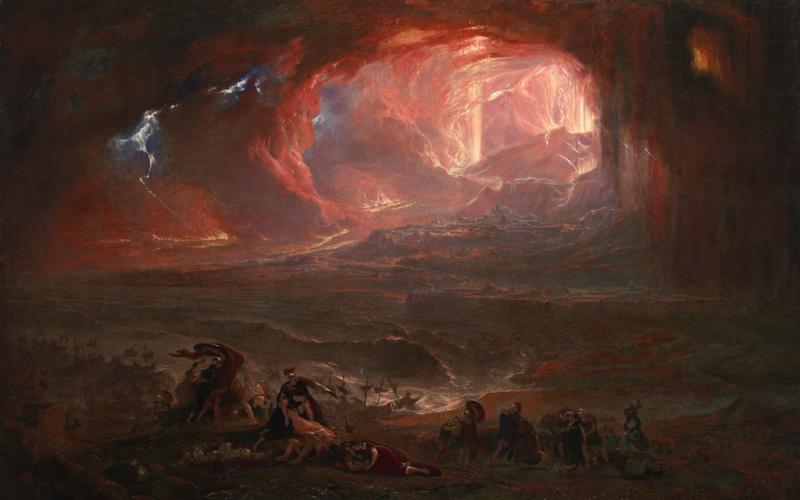
The first room of Ruin Lust is a knockout. Three large-scale pictures indicate the enduring fascination that ruins have held for artists over the centuries. John Martin’s apocalyptic view of Vesuvius smothering Pompeii in a vast cloud of volcanic ash (main picture) is like a vision of Hell. The engulfing dust storm is shaped like a fiery grotto – seductive yet repellent.
By comparison, Jane and Louise Wilson’s 2006 photograph (pictured below) of a decaying World War Two bunker in Azeville (2006), France is stark, brutal and grey. Yet this louring hulk could also be the gateway to Hell. Streaked with mould and tufted with encroaching vegetation, the concrete edifice is a monument to human stupidity; it is also an ironic reminder that the brutalist architecture which sprang up after the war, as an embodiment of socialist ideals, had military origins.
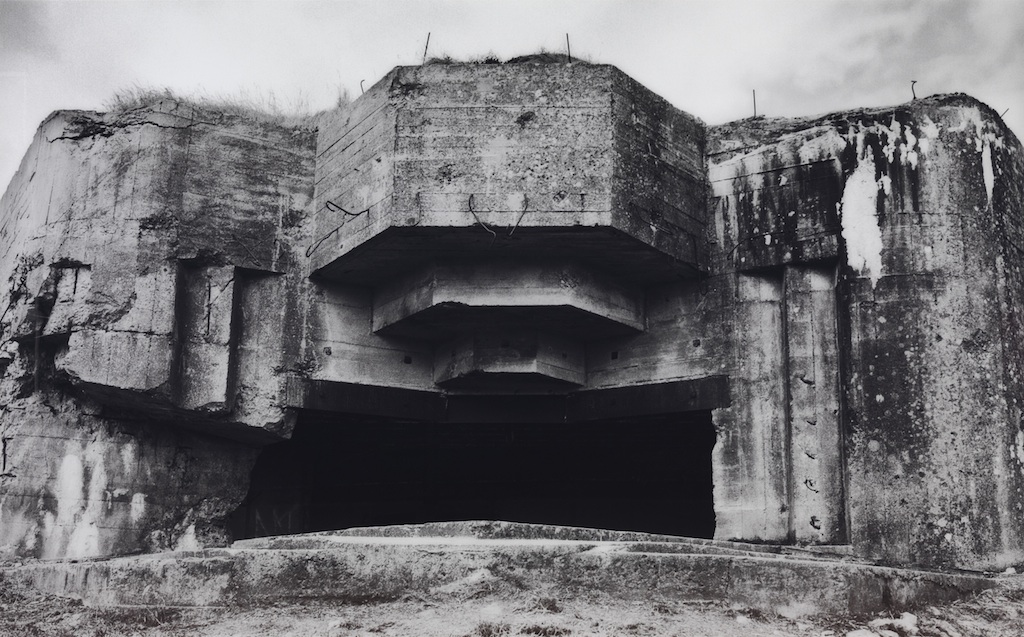 John Constable’s Sketch for Hadleigh Castle (1829) is similarly grey, but unlike the deathly stillness of the Wilsons' photograph, which suggests the slow but inexorable march of decay, the canvas is alive with dancing brushmarks. Standing on a bluff overlooking the sea, the ruined castle is exposed to the elements. The artist’s wife had died a few months earlier and the painting is often seen as an expression of his desolation, yet the picture pulsates with energy. Scudding clouds, shafts of sunlight and skittering birds create a strong sense of immediacy; you can almost feel the breeze ruffling your hair. But the blustery weather also evokes an awareness of time as a restless continuum of successive moments, cruelly indifferent to the past it erases.
John Constable’s Sketch for Hadleigh Castle (1829) is similarly grey, but unlike the deathly stillness of the Wilsons' photograph, which suggests the slow but inexorable march of decay, the canvas is alive with dancing brushmarks. Standing on a bluff overlooking the sea, the ruined castle is exposed to the elements. The artist’s wife had died a few months earlier and the painting is often seen as an expression of his desolation, yet the picture pulsates with energy. Scudding clouds, shafts of sunlight and skittering birds create a strong sense of immediacy; you can almost feel the breeze ruffling your hair. But the blustery weather also evokes an awareness of time as a restless continuum of successive moments, cruelly indifferent to the past it erases.
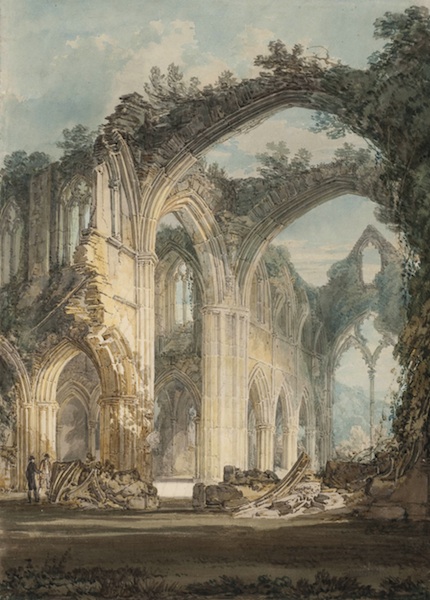 Juxtaposing old and new work, the exhibition goes on to show the many ideas expressed over the centuries through images of ruins. In the 18th century the fashion was to adorn one’s country estate with artificial ruins. This maudlin fascination was boosted by William Gilpin’s writings on the picturesque, which encouraged artists like Turner and John Sell Cotman to paint deliciously atmospheric watercolours of crumbling edifices (pictured left: JMW Turner’s Tintern Abbey, 1794). In the 1980s Keith Arnatt visited many of the sites mentioned by Gilpin, which have since been designated as Areas of Outstanding Natural Beauty. His photographs show them blighted by hideous modern eyesores including waste bins, fences, ugly signage and kids’ climbing frames.
Juxtaposing old and new work, the exhibition goes on to show the many ideas expressed over the centuries through images of ruins. In the 18th century the fashion was to adorn one’s country estate with artificial ruins. This maudlin fascination was boosted by William Gilpin’s writings on the picturesque, which encouraged artists like Turner and John Sell Cotman to paint deliciously atmospheric watercolours of crumbling edifices (pictured left: JMW Turner’s Tintern Abbey, 1794). In the 1980s Keith Arnatt visited many of the sites mentioned by Gilpin, which have since been designated as Areas of Outstanding Natural Beauty. His photographs show them blighted by hideous modern eyesores including waste bins, fences, ugly signage and kids’ climbing frames.
In 1830 John Soane commissioned Joseph Gandy to produce a watercolour celebrating the completion of the Bank of England (pictured below right). Gandy’s view of the building as a ruin is a cunning device to reveal the complex interior, but is also an extraordinary act of hubris suggesting that the building is destined to become an emblem of Western civilisation, on a par with the classical ruins Soane emulated in the design.
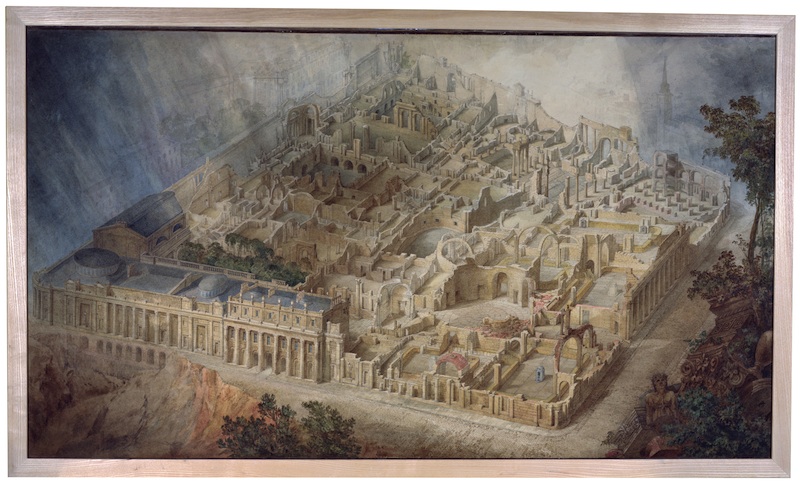 Some 50 years later, Henry Dixon recorded numerous buildings for the Society for Photographing Relics of Old London. These included galleried coaching inns like the King’s Head which, made obsolete by the arrival of the railways, had deteriorated into slums and were due for demolition. Over 100 years later, Rachel Whiteread recorded the demolition of two tower blocks on the Clapton Park Estate in east London. Her euphoric photographs (pictured below left) are a stark reminder of the failure of many postwar housing schemes to deliver desirable living conditions.
Some 50 years later, Henry Dixon recorded numerous buildings for the Society for Photographing Relics of Old London. These included galleried coaching inns like the King’s Head which, made obsolete by the arrival of the railways, had deteriorated into slums and were due for demolition. Over 100 years later, Rachel Whiteread recorded the demolition of two tower blocks on the Clapton Park Estate in east London. Her euphoric photographs (pictured below left) are a stark reminder of the failure of many postwar housing schemes to deliver desirable living conditions.
Keith Coventry’s 1994 bronze casts of saplings destroyed by residents on the Burgess Park and Queens Road estates in south-east London are not just records of vandalism. Bronze is associated with memorials to the heroic dead and postwar estates like these were designed to provide “homes fit for heroes” – housing for the families of servicemen returning from the war. Coventry’s sculptures bear ironic witness to the spectacular failure of these utopian schemes.
 Also from the mid-1990s are Jon Savage’s black and white photographs of scruffy corners of London, such as the scrapyards and vacant lots being swept away by the gentrification that is tidying up the city and editing out the unexpected. They filled me with nostalgia for these overlooked and unloved nooks and crannies, and the delights hidden there. My fascination with dereliction is fuelled by memories of the many bomb sites still around in my childhood. Seeing wallpaper flapping in an interior that was once somebody’s bedroom or a mantelpiece clinging 30 feet up to a blasted expanse of wall was a magical experience, especially for a child too young to grasp the significance of the destruction.
Also from the mid-1990s are Jon Savage’s black and white photographs of scruffy corners of London, such as the scrapyards and vacant lots being swept away by the gentrification that is tidying up the city and editing out the unexpected. They filled me with nostalgia for these overlooked and unloved nooks and crannies, and the delights hidden there. My fascination with dereliction is fuelled by memories of the many bomb sites still around in my childhood. Seeing wallpaper flapping in an interior that was once somebody’s bedroom or a mantelpiece clinging 30 feet up to a blasted expanse of wall was a magical experience, especially for a child too young to grasp the significance of the destruction.
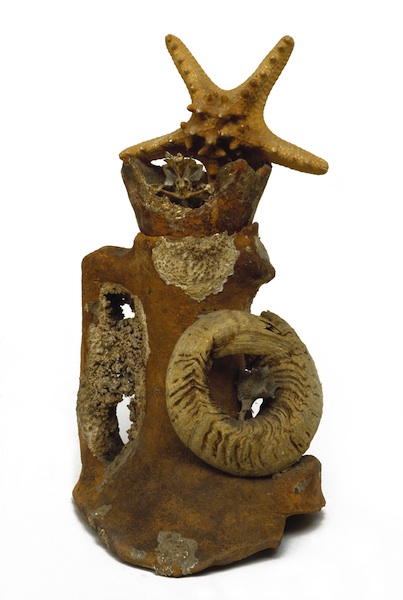 Such surreal melancholy is perhaps a key to the enduring fascination of ruins; despite being emblems of failure or death, the disasters they encapsulate are far enough removed from the experience and understanding of those who discover them to allow them the unfettered projection of their own thoughts and passions.
Such surreal melancholy is perhaps a key to the enduring fascination of ruins; despite being emblems of failure or death, the disasters they encapsulate are far enough removed from the experience and understanding of those who discover them to allow them the unfettered projection of their own thoughts and passions.
In Eileen Agar’s Marine Object (1939, pictured right) the neck of a Greek amphora covered in barnacles from centuries spent underwater has been further adorned with shells, a skull and a ram’s horn. This collage of found objects is a poetic meditation not just on death and the items we leave behind – whether bones, shells, artifacts or buildings – but on the powerful hold that such relics exert on the imaginations of the many generations who come afterwards.
- Ruin Lust at Tate Britain until 18 May
Explore topics
Share this article
The future of Arts Journalism
You can stop theartsdesk.com closing!
We urgently need financing to survive. Our fundraising drive has thus far raised £49,000 but we need to reach £100,000 or we will be forced to close. Please contribute here: https://gofund.me/c3f6033d
And if you can forward this information to anyone who might assist, we’d be grateful.

Subscribe to theartsdesk.com
Thank you for continuing to read our work on theartsdesk.com. For unlimited access to every article in its entirety, including our archive of more than 15,000 pieces, we're asking for £5 per month or £40 per year. We feel it's a very good deal, and hope you do too.
To take a subscription now simply click here.
And if you're looking for that extra gift for a friend or family member, why not treat them to a theartsdesk.com gift subscription?
more Visual arts
 'We are bowled over!' Thank you for your messages of love and support
Much-appreciated words of commendation from readers and the cultural community
'We are bowled over!' Thank you for your messages of love and support
Much-appreciated words of commendation from readers and the cultural community
 Photo Oxford 2025 review - photography all over the town
At last, a UK festival that takes photography seriously
Photo Oxford 2025 review - photography all over the town
At last, a UK festival that takes photography seriously
![SEX MONEY RACE RELIGION [2016] by Gilbert and George. Installation shot of Gilbert & George 21ST CENTURY PICTURES Hayward Gallery](https://theartsdesk.com/sites/default/files/styles/thumbnail/public/mastimages/Gilbert%20%26%20George_%2021ST%20CENTURY%20PICTURES.%20SEX%20MONEY%20RACE%20RELIGION%20%5B2016%5D.%20Photo_%20Mark%20Blower.%20Courtesy%20of%20the%20Gilbert%20%26%20George%20and%20the%20Hayward%20Gallery._0.jpg?itok=7tVsLyR-) Gilbert & George, 21st Century Pictures, Hayward Gallery review - brash, bright and not so beautiful
The couple's coloured photomontages shout louder than ever, causing sensory overload
Gilbert & George, 21st Century Pictures, Hayward Gallery review - brash, bright and not so beautiful
The couple's coloured photomontages shout louder than ever, causing sensory overload
 Lee Miller, Tate Britain review - an extraordinary career that remains an enigma
Fashion photographer, artist or war reporter; will the real Lee Miller please step forward?
Lee Miller, Tate Britain review - an extraordinary career that remains an enigma
Fashion photographer, artist or war reporter; will the real Lee Miller please step forward?
 Kerry James Marshall: The Histories, Royal Academy review - a triumphant celebration of blackness
Room after room of glorious paintings
Kerry James Marshall: The Histories, Royal Academy review - a triumphant celebration of blackness
Room after room of glorious paintings
 Folkestone Triennial 2025 - landscape, seascape, art lovers' escape
Locally rooted festival brings home many but not all global concerns
Folkestone Triennial 2025 - landscape, seascape, art lovers' escape
Locally rooted festival brings home many but not all global concerns
 Sir Brian Clarke (1953-2025) - a personal tribute
Remembering an artist with a gift for the transcendent
Sir Brian Clarke (1953-2025) - a personal tribute
Remembering an artist with a gift for the transcendent
 Emily Kam Kngwarray, Tate Modern review - glimpses of another world
Pictures that are an affirmation of belonging
Emily Kam Kngwarray, Tate Modern review - glimpses of another world
Pictures that are an affirmation of belonging
 Kiefer / Van Gogh, Royal Academy review - a pairing of opposites
Small scale intensity meets large scale melodrama
Kiefer / Van Gogh, Royal Academy review - a pairing of opposites
Small scale intensity meets large scale melodrama
 Jenny Saville: The Anatomy of Painting, National Portrait Gallery review - a protégé losing her way
A brilliant painter in search of a worthwhile subject
Jenny Saville: The Anatomy of Painting, National Portrait Gallery review - a protégé losing her way
A brilliant painter in search of a worthwhile subject
 Abstract Erotic, Courtauld Gallery review - sculpture that is sensuous, funny and subversive
Testing the boundaries of good taste, and winning
Abstract Erotic, Courtauld Gallery review - sculpture that is sensuous, funny and subversive
Testing the boundaries of good taste, and winning
 Edward Burra, Tate Britain review - watercolour made mainstream
Social satire with a nasty bite
Edward Burra, Tate Britain review - watercolour made mainstream
Social satire with a nasty bite

Add comment